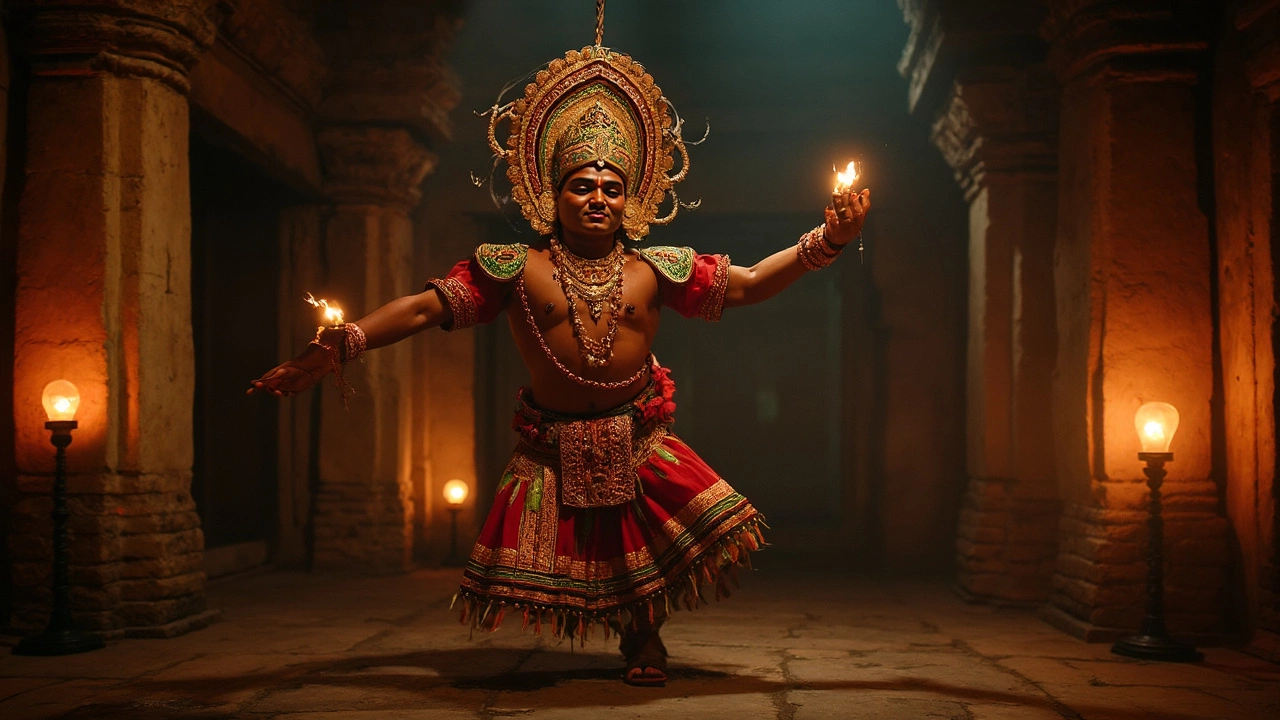Kathakali: The Dramatic Dance-Drama of Kerala
When you think of Indian classical dance, you might picture Bharatanatyam or Odissi—but Kathakali, a highly stylized dance-drama from Kerala that blends mime, music, and martial movements to tell stories from Hindu epics. Also known as Kathakali Nataka, it’s not just performance—it’s ritual, history, and emotion wrapped in paint and silk. Unlike other dance forms, Kathakali doesn’t rely on spoken words. Instead, every flick of the eye, twist of the wrist, and step of the foot carries meaning. Dancers train for years just to master the hand gestures—called hastas—that convey everything from a storm to a king’s sorrow.
What makes Kathakali unique is how deeply it’s tied to Hindu mythology, the source of its stories, characters, and moral themes. The plays are drawn from the Mahabharata, Ramayana, and Puranas. You’ll see gods like Krishna, demons like Ravana, and heroes like Arjuna come alive on stage—not through dialogue, but through exaggerated facial expressions and choreographed movement. The makeup alone takes hours to apply and tells you who the character is before they even move: green for noble heroes, red for evil kings, black for forest dwellers, and white for demons with hidden virtue.
This art form doesn’t just exist in theaters. It’s passed down in families, taught in village schools, and performed during temple festivals in Kerala. Even today, you’ll find young dancers waking up at 4 a.m. to practice footwork, breathing, and eye control. The music? Live percussion from the maddalam and chenda, with vocal chants that guide the rhythm and emotion. It’s not entertainment for passive viewers—it demands attention, because every second is deliberate.
While Kathakali is often seen as ancient, it’s still evolving. Modern troupes experiment with shorter versions for international audiences, and some even adapt tales from other cultures—but the core remains untouched. The paint, the costumes, the intensity—they’re all still there. If you’ve ever wondered how a culture keeps its stories alive without books or screens, Kathakali shows you how.
Below, you’ll find articles that explore related traditions—from Tamil folk dance to the music that moves these stories forward. You’ll see how Kathakali fits into the larger world of Indian performance, what makes it different from other classical forms, and why it still holds power today.
